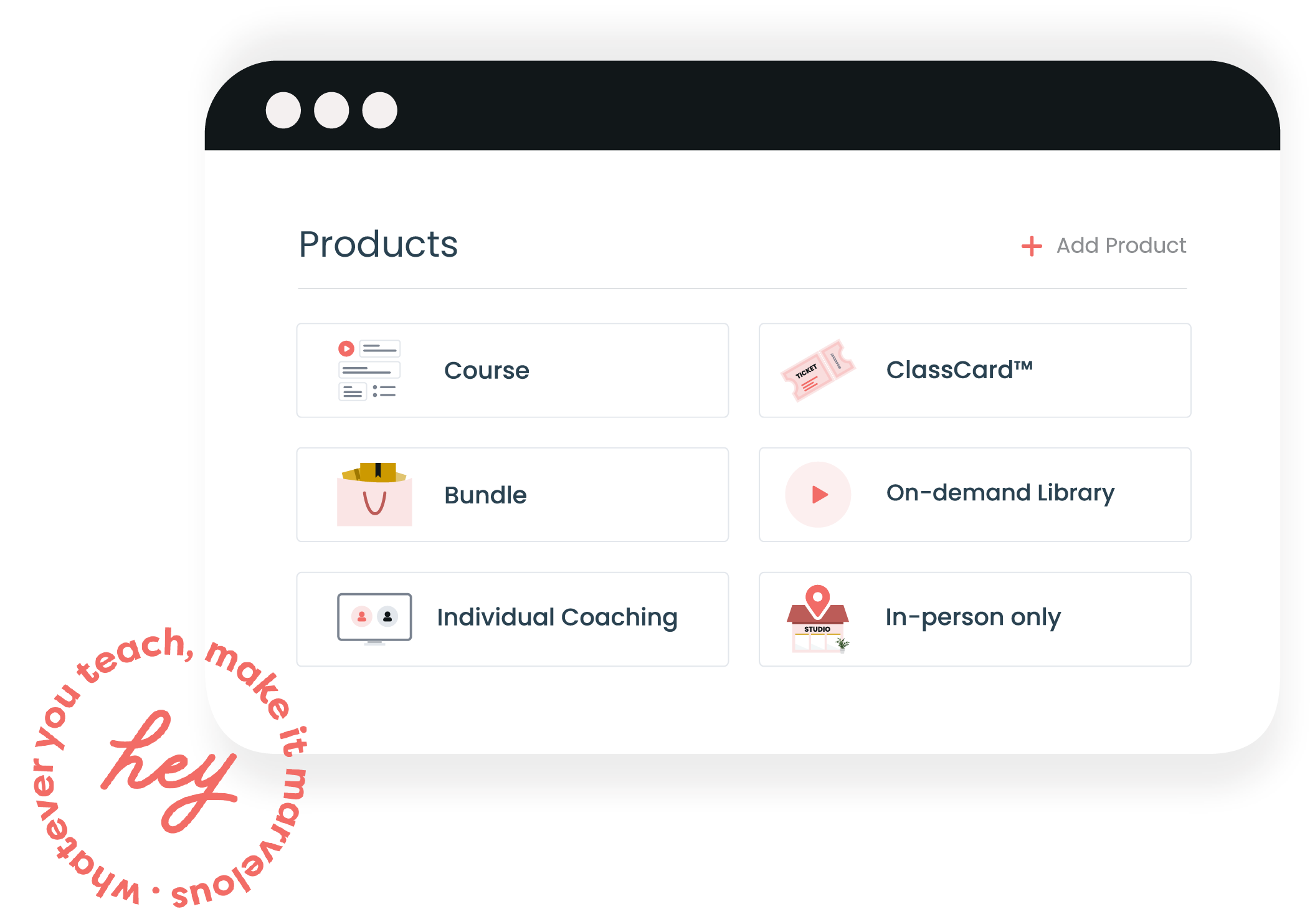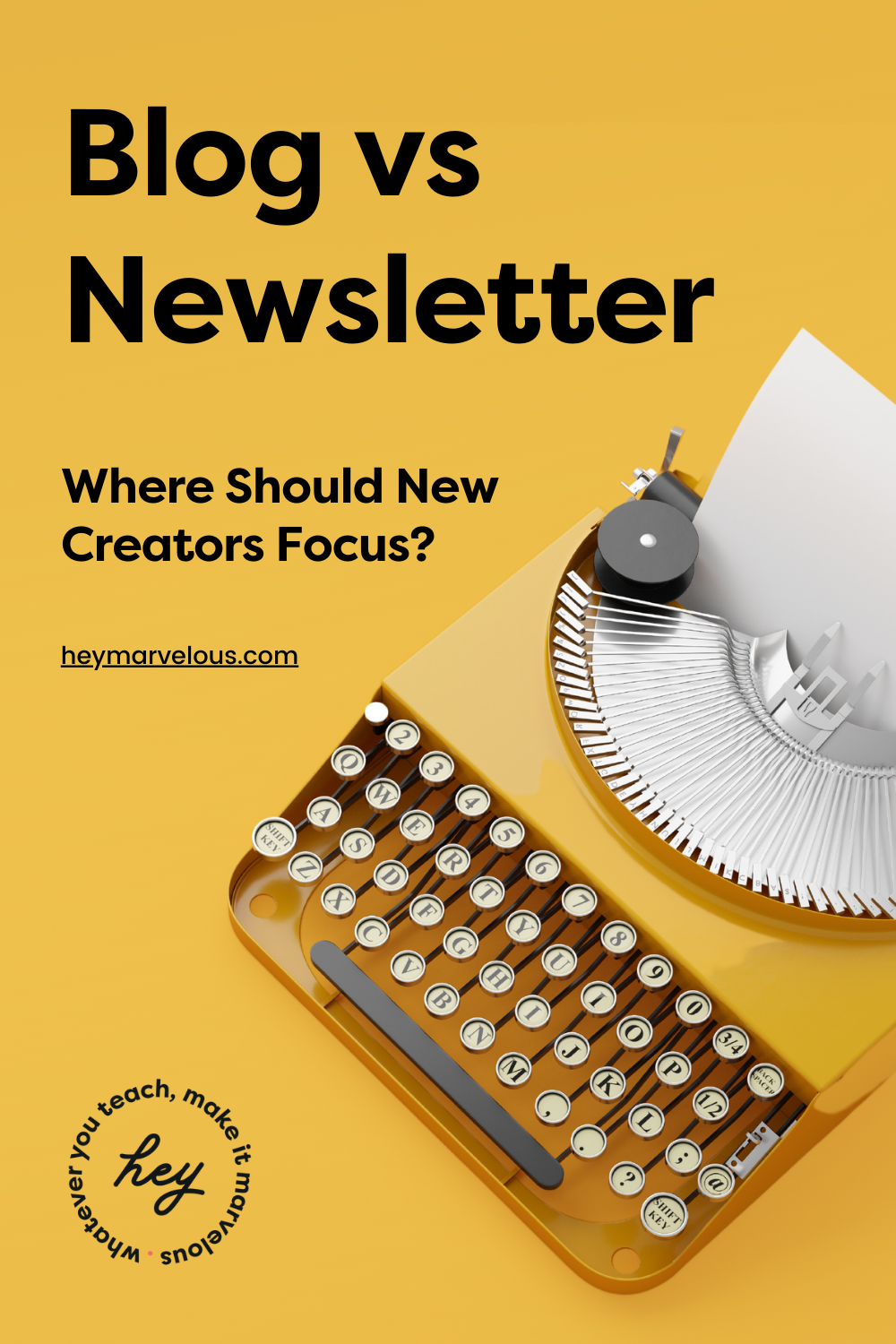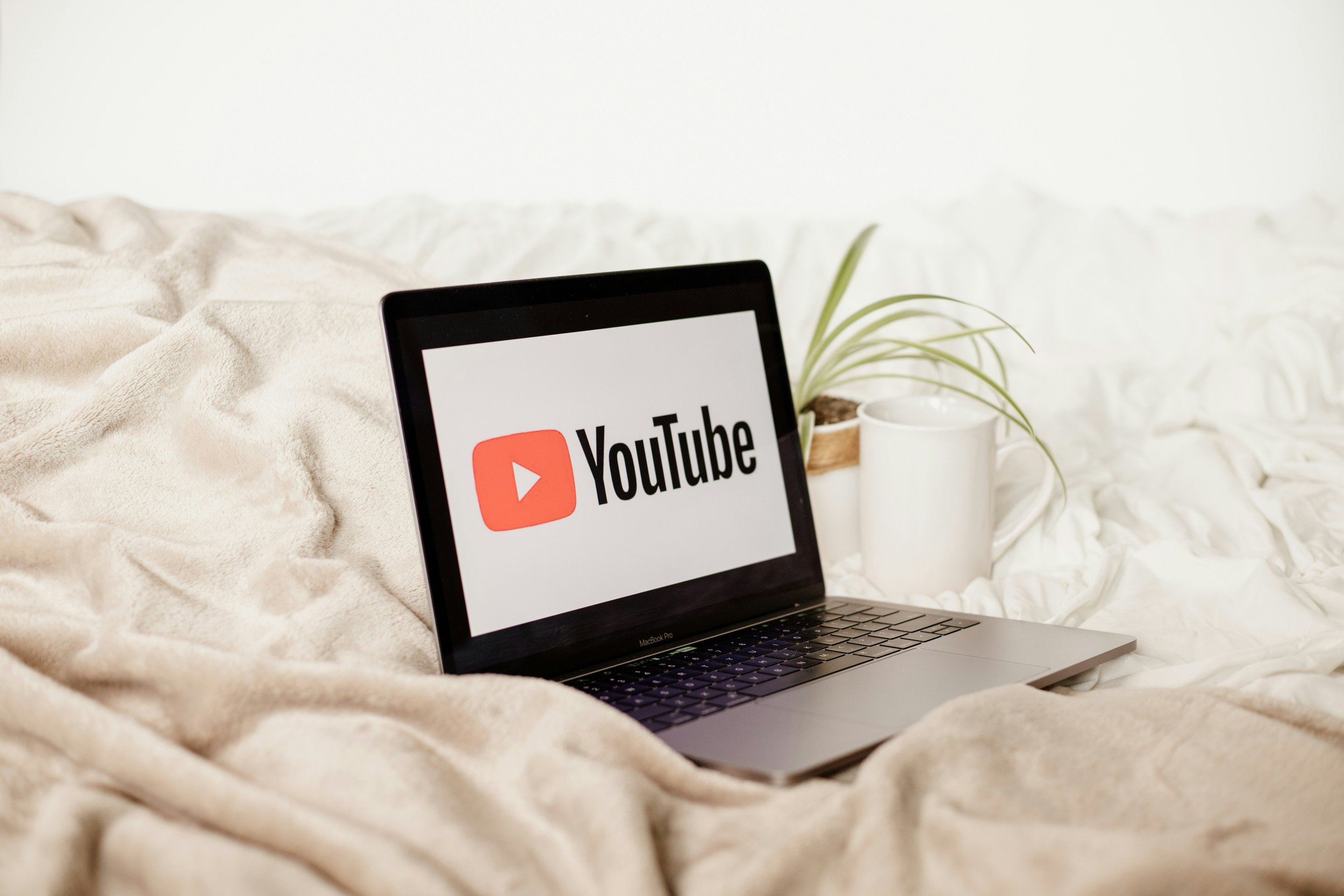Blog vs Newsletter: Where Should New Creators Focus?
It’s very rare for people to just land in a creator role. You’ve likely been pulled towards this career because you discovered something that has improved your life, and you want to share that with others.
The question is, what medium should you use to get your voice heard and stand out in a world where there is an information overload?
It can be difficult to decide which platform will give you the most value for your time. So, in this blog post, we discuss two options you have for sharing your thought leadership at scale: creating a weekly blog or sending a weekly newsletter. We'll explore what makes each one unique, how they can work together in harmony, and compare both their pros and cons.
So, let's dive into it: blog vs newsletter – which is best for creating engaging online content?
What is a Blog?
A blog is an online platform where content creators can share their thoughts, ideas, discoveries, and stories with their audience.
The first blog was said to have started way back in 1994 by Justin Hall, and 3 decades later, the purpose of a blog has changed very little.
Blogs can be written in a variety of styles, such as long-form articles or short posts (marketing extraordinaire Seth Godin, is famous for his short-style daily blogs).
Creators typically use blogs to share a story, provide educational resources, promote products or services, or to build authority in their field and strengthen their relationships with actual and potential clients.
Blogs come in many different forms. As a professional creator, you’re likely to start something like a health and wellness blog, travel blog, lifestyle blog, or food blog but many people still use the blogging style to share their stories and ideas with family and friends. (The story/diary style of blogging is not what we’re talking about in this post.)
A blog post usually consists of text but may also include images, audio clips, or videos to help illustrate the writer’s point. These images or audio/video files relate to what is being spoken about in the blog in some way and help to break up the long-form content so that it is easier to read.
One great benefit of blogging is that it can be free or very, very inexpensive.
You don’t need any special software or coding skills; all you need is an internet connection, a platform to post your blog, and some time.
Sites like Medium allow you to create your own blog without spending any money on hosting fees or domain names.
Our preference is to use a platform like Squarespace so that our visitors can navigate through our site to find out more about how Marvelous can help them with teaching or coaching online.
Another advantage of blogging is its potential reach – anyone who has access to the internet can read your blog posts no matter where they live in the world.
This means that if you write something interesting enough, people will find it regardless of cultural or language barriers. This makes blogging a great way to connect with people around the globe who share similar interests with you. However, to be successful at this, you’ll want to have an SEO strategy in place. Check out our article on SEO 101 for Online Creators: How to Use SEO to Increase Your Reach.
A blog can be a great way to attract an audience, share content and ideas with your existing audience, and build a reputation as an expert within a specific niche.
Although blogging is a fantastic strategy for any creator, newsletters offer an even more direct way of connecting with your people.
What is a Newsletter?
A newsletter is an email sent out to subscribers on a regular basis. Content creators often use a newsletter to connect with their audience on a much more personal level. Sharing stories, educational resources, and updates that they wouldn’t necessarily share anywhere else.
The people on your email list have opted in to hear from you on a regular basis and would be considered your warm audience. A warm audience is comprised of people who like what you do and see you as an expert in your field. This means they are the group of people who are most likely to purchase from you when you share your latest course, membership, or workshop.
For creators, newsletters are typically sent out on a weekly basis. However, the key is consistency. If weekly is too overwhelming, then you could certainly send one out every two weeks or even monthly as you’re getting started.
The content of your newsletter should be tailored to fit the interests of the readership and should offer something new each time it’s sent out. This could include a new product, upcoming events, special offers, industry news, or tips & tricks related to the services you provide.
Subscribers can sign up for newsletters either through a website form or by providing their email addresses directly when making purchases from your online studio. Once subscribed, they will receive emails containing links back to specific pages on your website or your online shop, where more detailed information can be found if desired.
When creating newsletters, it’s important not only to consider what type of content you want to be included but also how much detail you want included in each one. Too little and people won't find them interesting enough; too much and people may feel overwhelmed.
As you can see, newsletters are a great way to stay in touch with your audience, and keep them informed and engaged.
Now let's look at how blogs and newsletters can work together to maximize your reach!
How Can Blogs and Newsletters Work Together?
Blogs and newsletters are powerful tools for content creators to reach their audience.
Newsletters can be used to introduce a topic or idea alongside a personal anecdote, while blogs can go deeper into the topic, and provide educational value. Additionally, both can be used to promote one another’s content.
For example, if you have a blog post about the “5 Key Steps to a Successful Digital Product Launch” you could use your newsletter to provide an overview of the blog post and give readers free access to resources related to that topic or share an anecdote of your own recent launch. You could also link back to the blog post in your newsletter so readers who want more information can choose to go deeper.
On the flip side, if you have an email list of subscribers who already know about your business but may not be aware of all you have to offer, you could use a blog post as an opportunity to showcase your online offerings in detail.
What Information Should be Included in a Blog vs a Newsletter?
You’ll find that some topics might require more explanation than others. Long-form content should typically go into your blog. Shorter messages and excerpts of longer posts are best shared in your newsletter.
The wonderful thing is that blogs and newsletters are a great combination for content creators. By understanding the strengths of both a blog and a newsletter, you can create a powerful combination that will help you establish your expertise, engage with your audience, and grow your business.
Pros of Creating a Blog or Newsletter
Blogs and newsletters are two of the most powerful tools content creators have at their disposal to engage with their audience.
Blogs allow for comments from readers, which can help build relationships with them. Additionally, blogs provide a platform for fresh content on a regular basis.
Newsletters are great for reaching out directly to subscribers who have already expressed interest in your content. They also give you an opportunity to send exclusive offers or updates that won’t be found anywhere else.
A newsletter is great for nurturing your email list, so that when you share your latest online courses or memberships, they are much more likely to buy because they recognize the value you offer in your free content (and trust that what you offer in your paid programs is going to be second-to-none).
You can also use newsletters as a tool for gathering feedback from customers and learning more about what they want from your products and services.
Using both blogs and newsletters together gives content creators even more opportunities to connect with their audience in meaningful ways while driving traffic back to their website or blog post topics that may not get as much attention otherwise.
It’s important though that the content remains relevant so it doesn’t become overwhelming for readers who receive multiple emails each week containing information they don’t find useful or interesting.
Newsletters are also great for building trust between you and your subscribers by providing helpful tips, resources, stories of success, etc., all tailored specifically towards them based on the data collected when they sign up.
This helps make sure everyone gets something valuable out of every email sent instead of just generic messages sent out en masse without any personalization whatsoever.
Finally, using both blogs and newsletters together allows you to track analytics such as open rates and click-through rates in your emails, and page views or site engagement on your blog.
With this data, you can better understand how successful (or unsuccessful) certain campaigns were and adjust accordingly going forward. This is especially helpful if trying different strategies over time, such as A/B testing headlines, subject lines, or copywriting styles.
Cons of Using Blogs & Newsletters
One of the main cons of creating both a blog and a newsletter is that it requires more time and effort from you as the content creator.
This means having two separate sources of content that need to be updated on a regular basis which can become quite time-consuming.
So, if you decide to do both, see the blog as where you’re creating long-form content for new readers, and the newsletter as a place where you share a personal anecdote, or a quick peek into the subject that you wrote about in your blog post.
You can still link back to the blog post so that your subscribers can read more if they want, but by providing a quick peek or personal touch, you’re offering your subscribers additional value by being on your email list.
FAQs
Q: Which is better: blog or newsletter?
Both blogs and newsletters can be powerful tools for creators. Blogs are great for sharing long-form content such as educational information, tutorials, case studies, and interviews. They also provide a platform to build relationships with readers through comments and engagement.
Newsletters, on the other hand, are ideal for delivering short snippets of information quickly to subscribers in an easily digestible format. They’re perfect for adding a personalized message about the blog you’ve written, announcing new products or services, or providing timely updates about your business.
Ultimately it depends on what you want to achieve; both blogs and newsletters have their own unique advantages that should be considered when deciding which is best suited for your needs.
Q: What is the difference between newsletter and blog?
A newsletter is a regularly distributed publication that contains information about current events, news, or other topics of interest. It’s typically sent on a regular basis via an email marketing platform such as Mailchimp, ConvertKit, or Flodesk.
A blog is an online journal or feed displaying information in reverse chronological order, with the latest posts appearing first. Blogs usually contain text-based content such as articles, stories, reviews, tutorials, etc., but may also include images, audio files, and videos. Like newsletters, you’ll want to be posting regularly. Most content creators choose to write and publish a blog post at least once per week.
Q: Does my blog need a newsletter?
Yes, your blog should have a newsletter. A newsletter is an effective way to keep your audience informed about new content.
Additionally, newsletters are great for driving traffic back to your blog as well as helping you promote any products or services you may be offering.
Finally, blogs provide a platform where you can embed a form for an opt-in to collect email addresses from interested readers, which can then be used for targeted marketing campaigns down the line.
Final Thought
When used together in an effective way, blogs and newsletters can be a powerful combination to reach potential customers and build relationships with them. While there are pros and cons to using both of these platforms, understanding the differences between a blog vs. newsletter is key to making sure you're getting the most out of your online presence. With the right strategy in place, you can create engaging content that will help expand your audience while growing your business at the same time.
















